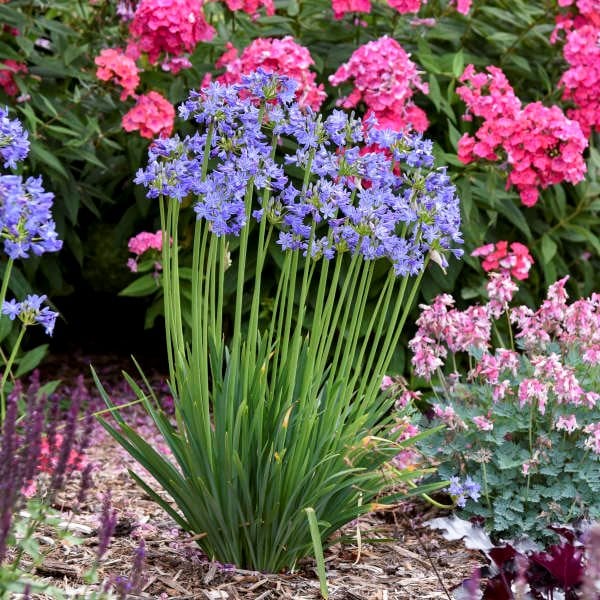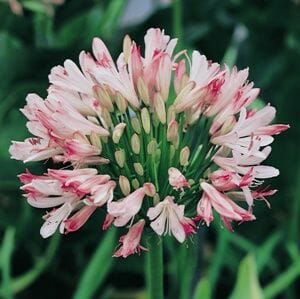Mastering the Art of Agapanthus Care: Vital Steps for Healthy Growth and Vibrant Blossoms
In the realm of cultivation, the growing of agapanthus stands as a gratifying venture for those that seek to nurture these elegant flowering plants. From choosing the best selection to grasping pruning strategies, the journey towards growing flourishing agapanthus plants is multifaceted and holds the key to opening the full possibility of these organic gems.

Choosing the Right Agapanthus Range

When choosing the best Agapanthus selection for your garden, take into consideration aspects such as climate suitability, flower shade, and development behavior. Furthermore, think about the environment in your region to make sure the Agapanthus range you pick can thrive in your details problems. Recognizing the growth behavior of various Agapanthus varieties is crucial for correct positioning within your garden.
Ideal Growing Conditions
Considering the ideal ecological requirements is necessary for effective Agapanthus cultivation. Agapanthus prospers in well-draining dirt with a slightly acidic to neutral pH level. When growing, select a location that gets complete sunshine to partial color. In hotter climates, offering some afternoon color can protect against scorching of the leaves. Agapanthus plants are sensitive to cold temperature levels and must be shielded from frost during winter season.
To make certain healthy development and vivid blossoms, plant Agapanthus light bulbs at a deepness of regarding 2-4 inches and room them 8-12 inches apart. Mulching around the base of the plants assists maintain dampness and subdues weed development.
Watering and Feeding Tips
Preserving correct moisture levels and providing necessary nutrients are key aspects in the treatment program for Agapanthus plants. When it comes to watering Agapanthus, it is vital to strike an equilibrium. These plants favor consistently moist soil but are at risk to root rot if overwatered.
Fertilizing Agapanthus is essential for advertising healthy and balanced development and respected flowers. Apply a balanced fertilizer, such as a 10-10-10 formula, in the early spring as brand-new development arises. By adhering to these watering and fertilizing tips, you can ensure your Agapanthus plants thrive and create lively, lasting flowers.
Pruning Techniques for Agapanthus
Trimming Agapanthus plants at the proper times and with appropriate methods is critical for maintaining their health and wellness and promoting optimal development and blooming. The excellent time to prune Agapanthus remains in late wintertime or early spring before new growth arises. Begin by eliminating any type of dead or yellowing leaves near the base of the plant. Cut them as short as possible without harming the arising shoots.
For flowered stems, wait up until the flowers have perished and afterwards trim them back to the base. This not just cleans the plant's look however also motivates the development of brand-new flower buds. Deadheading invested flowers can likewise redirect the plant's energy right into producing even more flowers instead of establishing seeds. Nevertheless, if you desire to accumulate seeds for breeding, leave some flowers to dry and fully grown on the plant.
Remember to utilize clean, sharp tools to make specific cuts and lower the risk of introducing conditions. Agapanthus. Normal pruning will certainly help keep your Agapanthus looking neat and healthy and balanced while making sure a bountiful screen of attractive blooms
Taking Care Of Usual Pests and Diseases
After ensuring proper pruning techniques for Agapanthus, it is crucial to address typical parasites and conditions that can impact the health and wellness and vitality of these plants. One typical insect that affects Agapanthus is the Agapanthus gall midget.
Additionally, Agapanthus plants useful link can endure from origin rot if they are grown in improperly draining dirt. By being watchful and taking prompt activity against bugs and diseases, you can More Info help your Agapanthus plants grow and produce dynamic flowers. Agapanthus.
:strip_icc()/snow-storm-agapanthus-18f19b9a-3e7c6c88441b4127a9015f9a9fecec59.jpg)
Final Thought
To conclude, mastering the art of agapanthus treatment entails picking the best selection, giving ideal growing problems, proper watering and feeding, ideal trimming techniques, and addressing usual bugs and diseases. By following these crucial actions, you can make certain healthy and balanced development and vibrant flowers for your agapanthus plants. Remember to routinely keep an eye on and keep your plants to promote their general health and durability.
To guarantee healthy development and vivid blossoms, plant Agapanthus bulbs at a deepness of about 2-4 inches and area them 8-12 inches apart. By following these watering and fertilizing tips, you can ensure your Agapanthus plants thrive and create vivid, durable flowers.
One common parasite that affects Agapanthus is the Agapanthus gall midget. Additionally, Agapanthus plants can endure from root rot if they go to my site are planted in badly draining dirt. By following these crucial steps, you can make sure healthy and balanced growth and vibrant blooms for your agapanthus plants.
Comments on “Common Agapanthus Troubles and How to Fix Them”